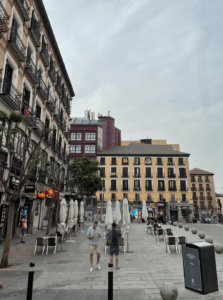This past week, I had the opportunity to travel to Madrid, Spain. In just one week, I was able to see how people interact with one another, understand their day-to-day routine, as well as how much they care about their city. As the City of Madrid is over 900 years old, I can tell the difference from the modern to the old part of the city. I believe the City of Madrid has been able to maintain its old enchantments as well as integrate contemporary architecture and infrastructure.
With this in mind, I am brought back to Paisaje Transversal’s motto “Listening and Transforming the City.” All their projects are based on how the city functions with its residents and how they have been able to maintain a culture of giving back to their community. By listening to the needs and wants of the citizens, Paisaje Transversal has been able to create cohesive solutions for the different characteristics that the city has.
As I ask myself what “field” means for my research, it is hard to pinpoint one thing. I think it incorporates years of traditions and the vast cultures that the City of Madrid has been able to maintain throughout the years. While this field may not be widely discussed, I have found that numerous groups are doing this work. Like Madrid Ciudad de los Cuidados, Experimenta Distrito, and Federación Regional de Asociaciones de Vecinos de Madrid (FRAVM). They all have incorporated the concepts of neighborhood activism, collective care, and give back to those that are in need. It is encouraging to reflect on the reality that these practices are not new and that it is a part of how the city and its people functions. They are able to continue their culture as well as illuminating day-to-day problems that they may be dealing with at the moment.
This is why I believe that the term field in my research is a concept that other cities around the world can learn from. In the next following weeks, I want to be able to do just that, to show just how people can learn from the City of Madrid and its culture.

